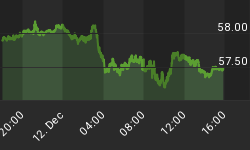The Fed is keeping a close eye on gold and silver as the metals respond to those lingering mini-waves of inflation that keep popping up from time to time. The Fed has continuously raised the fed funds rate as it performs the high-wire act to keep inflationary pressures from reemerging.
Speaking of mini-waves of inflation, we've just witnessed a rather pronounced wave off the early June lows in the gold market. In my commentary of June 11 entitled "Another mini-inflation wave coming up?" I wrote that the mini-deflationary trend of April-June had apparently run its course and that "a new mini-inflationary (or "reflationary" if you will) trend is underway." I further stated that based on the trading channel parameters (highlighted in the gold chart in that particular commentary) a rally to the $440 area was anticipated, which is where gold met resistance most recently.
Much has been made in yellow metal circles lately about the recent disconnect between the dollar and gold. As an example of this, a recent communique from a prominent mutual fund manager had this to say: "Over the past few weeks we have had a decoupling of the inverse correlation between the dollar and gold. Gold and the dollar have both moved upward against other currencies, particularly the Euro. Since France and the Netherlands both voted against the recent European Union Constitution, investors that initially were seeking to protect themselves from a weak U.S. economy through Euros are now moving into gold."
In response to this I'm reminded of a statement by a well-known gold analyst. Years ago he said something to the effect that "The inverse relationship between the gold and the dollar is always there. Whenever a seeming disconnect occurs between gold and the dollar it is always temporary and short-lived." That is something worth pondering as the talk of a gold/dollar disconnect grows louder.
The recent gold rally, while expected, wasn't confirmed by the price of silver. The white metal has languished in its narrow trading range between roughly $6.80-$7.60 for most of the year and most recently is close to testing the lower boundary of an immediate-term downtrend channel. This non-confirmation of the gold rally by the price of silver strongly suggests the recent rally has hit its terminus.

I've taken the liberty of updating the trading channel in gold that we first examined on June 11 in its formative stage. It has unfolded nicely as expected with the upper channel boundary around the $440 area (basis spot gold) acting as resistance. Notice how many times the price line has hit the upper channel boundary in this short period of time - a sign of continuous resistance pressure. This means a dip back into the near-term trading range is likely for a while as this latest rally has reached the exhaustion stage.

The trading ranges in both precious metals allow the Fed to see where to adjust its monetary policy in its ongoing attempt at fixing the "optimum" rate of inflation for the final phase of integrating the U.S. economy into a much larger global economic superstructure. The years 2004-2005 have been trying times for the financial regulators in their attempts at currency stabilization, and we'll most certainly see more patience-testing periods in the months ahead, especially as the 6-year cycle peaks later this year. But the trading opportunities for the alert gold trader will be worth the wait, just as the most recent rally was.















